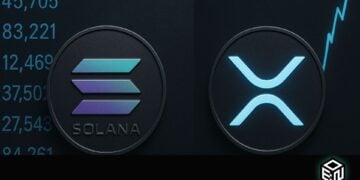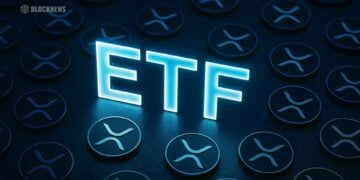- Coinbase is exploring the idea of developing “flatcoins” on its Layer 2 Base network.
- The flatcoins would be pegged to inflation by tracking CPI and inflation data.
- Coinbase said it’s time to build an inflation-tracking stablecoin that negates poor monetary policy decisions of central banks.
Drawing from the recent challenges in the global banking system, a top crypto exchange Coinbase is exploring the possibility of inflation-pegged stablecoins – flatcoins. According to the crypto firm, now is the time to build a stablecoin that tracks inflation data and negates poor monetary decisions from governments.
“Flatcoins” – essential to be built on the Base network
Last month, Coinbase announced the launch of its Layer 2 Base protocol on the Ethereum network to boost scalability and provide a new option for DApp development powered by fellow layer-2 network Optimism. Alongside the announcement on Base, the U.S.-based crypto trading platform has extended a request to developers to explore four key critical innovation areas, one of which is the idea of flatcoins.
According to the statement dubbed “Request for Builders,” flatcoins are “stablecoins that track the rate of inflation, enabling users to have stability in purchasing power while also having resiliency from the economic uncertainty caused by the legacy financial system.”
The other three “critical innovations” that the trading platform believes are essential to building on the Layer 2 Base network are an on-chain reputation system, an on-chain limit order book (LOB) exchange, and tools that make the DeFi space safer.
Most stablecoins in the market are pegged to fiat currencies like the U.S. dollar, the British Pound, or the Euro or to commodities like Gold, Silver, or oil. However, flatcoins, as proposed by Coinbase, would be pegged to the cost of living by tracking consumer price index (CPI) and inflation data.
“We are fascinated by the deep thought we’re seeing in decentralized stablecoin design and are particularly interested in ‘flatcoins’ – stablecoins that track the rate of inflation, enabling users to have stability in purchasing power while also having resiliency from the economic uncertainty caused by the legacy financial system.”
Coinbase also said that it welcomes ideas for other forms of flatcoins that are not fiat-pegged but “rather fill the space” between the traditional stablecoins and “volatile crypto assets.” The San Francisco-based crypto company added:
“With the recent challenges in our global banking system, we believe these explorations are more important than ever.”
Noteworthy, since flatcoins would be tied to inflation rates, they are expected to retain their value over time. This would be particularly useful in countries with high inflation rates where buyers may be reluctant to keep their savings in local currency owing to its volatility.
Coinbase is one of many players toying with the idea of a flatcoin. Recently, billionaire investor and hedge fund manager Ray Dalio said that he would want to see an “inflation-linked coin” be brought to the masses, ensuring consumers secure their buying power. Speaking on CNBC’s Squawk Box on February 2, the founder of hedge fund firm Bridgewater Associates said:
“The closest thing to that is an inflation index bond, but if you created a coin that says, OK, this is buying power that I know I can save in and put my money in over a period of time and transact in anywhere, I think that would be a good coin.”
Coinbase also explained to builders how the other three areas of innovation would be approached. Meanwhile, Coinbase launched its Base Ecosystem Fund to help fund early-stage projects building on Base to help fast-track DeFi on the Layer 2 protocol. According to Base, the layer-2 network now supports over 30 blockchains.














